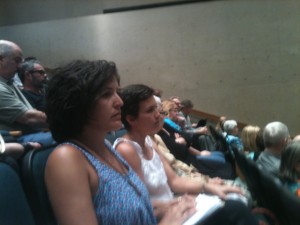Uncategorized
Thank you, It WAS a Watershed Moment in the Dallas Drilling Fight
 Yesterday's Dallas City Council briefing on a new gas drilling ordinance was supposed to be a showdown between dueling spokespeople for pro and anti-fracking arguments. And it did provide lots of memorable exchanges and statements. But the most dramatic moment of the day came courtesy of the audience itself.
Yesterday's Dallas City Council briefing on a new gas drilling ordinance was supposed to be a showdown between dueling spokespeople for pro and anti-fracking arguments. And it did provide lots of memorable exchanges and statements. But the most dramatic moment of the day came courtesy of the audience itself.
Dallas municipal law attorney Terry Welch was coming to the end of his presentation on why the recommendations from the city's task force should be strengthened: If we're wrong and fracking turns out to be completely safe, then you can always come back and liberalize strict regulations. But you can't undo the damage once drilling takes place with insufficient safeguards. Err on the side of public health and safety.
And with that, 90% of the packed room erupted into at least 60-90 seconds of continued and loud applause. But that wasn't the moment.
Because he had ended early, even after this round of applause, Welch had time left. Mayor Rawlings noted that and said something to the effect that "If you want to keep applauding for 4 more minutes I won't objec…." The last words of that sentence had not even left his mouth before the crowd took him up on his offer, began clapping wildly again and within seconds jumped to its feet with a sustained standing ovation that went on for the longest time. It was one continuous loud and kinetic vote in favor of doing more that was aimed directly at the Mayor and Council. That was the moment.
This was no public hearing, but the public most certainly was heard. It was the first time the Council had seen the depth and breath of support for stronger drilling rules. The pent-up energy from that applause was like a Blue Norther hitting the Council horseshoe straight-on.
Likewise, it was the first time the Council's constituents had seen the depth and breath of the pro-drilling members' belligerence and hopelessly out-of-date attitudes. It produced a lot of head-shaking.
We hope to bring you selected video from the meeting over the next couple of days. Meanwhile, here's a pretty good summary from the live blogging the Morning News was posting (do tell!), as well as a more sedate article for the paper itself.
Some highlights:
– You Care. There were so many of you – in August during work hours – that they had to move the meeting from the smaller briefing room to the Council Chambers, which were quickly filled too. It was a tremendous turnout. Thank you.
– Industry isn't satisfied. It's clear now that industry is trying to rollback the required distances between homes and wells even further than what the city's Task Force recommended after their last-minute collapse in February. A variance of 750 feet is no longer adequate. Now they want 600 feet. That's 400 feet closer than a strip club is allowed to get to a home in the City of Dallas.
– The council most ardent proponents of drilling share Ireland's view that the on-going national debate has been settled in their minds, and there are no serious hazards to fracking in urban areas.
– Mayor Rawling is very much engaged in this process and issue. He was attentive, asked good questions, and kept the lengthy proceedings flowing smoothly but democratically. Whatever else you may think of him or his motives, he's focused and direct on this subject.
– Citizen advocates Scott Griggs, Sandy Greyson, Angela Hunt and Carolyn Davis all asked great questions and provided a counterbalance to the Troglodyte contingent of the Council. You might want to drop them a thank you note.
– "Sulfuric Sheffie" Kadane – In what was the most jaw-dropping exchange of the day, Councilmember Kadane asked Welch if he knew what kind of chemicals would be spilled at a fracking site. Not waiting for an answer, he offered not benzene, or toluene, or diesel fuel, but Sulfuric Acid. Perfectly harmless stuff! We use it to clean our swimming pools! A little Sulfuric Acid wasn't going to hurt anyone.
– Jerry "El Conejo "Allen – Councilman Allen was obsessed with all the "rabbit holes" Welch and other could go down in terms of the hazards of fracking and thought he had all the ammunition he needed from spending a couple of hours going down some of them via Google. These rabbit holes are known to the rest of us as research. Did Welch know that the Trinity River was full of treated sewage right now?! Did he know how many regulatory agencies oversaw fracking? Did he know that thousands of people die every year from exposure to chemicals in the home? Wasn't fracking only dangerous because people were talking about it? Above all else, he kept reminding everyone that the gas operators had already paid the city 34.8 million for lease rights and not only do they deserve something in return but that's a lot of money!
Angela "Law and Order" Hunt – The most revealing exchange all day was Hunt's cross examination of hostile witness Ed Ireland, the gas PR hack Kadane had chosen to give the industry arguments, over full disclosure of all chemicals being used in fracking. She asked Ireland if he had any problem with Dallas writing an ordinance that would demand the listing of every single chemical being used on site. Not at all, Ireland said. Of course, he added, the operators themselves don't always have the last say. They hire contractors like Haliburton to come in and actually do the fracking and THEY might have a problem disclosing their fracking fluid recipes. Three times Hunt posed the same question, never letting Ireland escape a conclusive, definitive answer. Do you support full disclosure? And Ireland gave three slippery answers that finally pulled the curtain away from the industry's premeditated deception.
We're gaining momentum. By the end of he day, there was such a stark contrast between the advocates and arguments for more protections versus the Hollywood-scripted arguments of the other side, that you could almost hear the collective council pivoting to our side, despite no vote being taken. We can't afford to be over confident, but if we keep the pressure on, we can win this fight.
Next stop – We need at least one, if not two evening public hearings on the ordinance. As you contact your city council reps, please be sure to include this request.
Endocrine Disrupting Chemicals Linked to Endometriosis
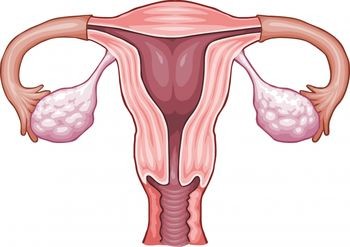 Another example of the insidious nature of endocrine disrupting chemicals is out.
Another example of the insidious nature of endocrine disrupting chemicals is out.
This week saw the publication of a study from the Eunice Kennedy Shriver National Institute of Child Health and Human Development in Maryland that shows an association between women with higher levels of a estrogen-mimicking pesticide and increased incidence of endometriosis.
Women were divided into groups with pelvic pain and no symptoms. Those with pain were more likely to be diagnosed with endometriosis if they had high blood levels of the estrogen-like pesticide hexachlorocyclohexane (HCH). Although HCH has been banned as a crop pesticide in the United States, it builds up and persists in the environment, so it remains in some food supplies.
Women with the highest blood of a sunscreen chemical, benzophenone, in their urine also had a higher risk of endometriosis according to the study, published in Environmental Science and Technology.
“Our studies are beginning to corroborate the idea that environmental estrogen may be associated with endometriosis,” said the Institute's Director Germaine Buck-Louis. But the link has a long toxicological history.
In 1993, the connection between endometriosis and environmental chemicals was discovered when Rhesus monkeys fed food contaminated with dioxins – hormone-disrupting pollutants created by waste incinerators and other industries – developed endometriosis 10 years later. (The Midlothian cement plants and the Exide lead smelter in Frisco have been the the largest industrial sources of airborne dioxin in North Texas over the last decade.)
A 2009 Italian study linked the disease, which stimulates uterine tissue growth in the ovaries or other parts of the body, to PCB and DDT exposure. Both are endocrine disrupters
“It’s certainly plausible that any outside source that alters estrogen levels, even slightly, could contribute to gynecological diseases,” said Dr. Megan Schwarzman, a family physician at San Francisco General Hospital and an environmental health scientist at the University of California, Berkeley who was not connected directly with the Institute study.
With 80,000 chemicals and counting in the marketplace to be exposed to, it's more than plausible.
Reminder
Go Fly a Kite
Chinese air quality actiivists are finding all kinds of ingenious ways to get the truth out about how bad air pollution is their country. We've written before about how they're buying their own portable PM monitors and posting the resutls online. Here's a group that's found a way to both make cheap air monitoring devices and really cool pieces of art at the same time by attaching elelctronics and LEDS to kites and getting color-coded real time results.
Coverage of the Exide Lead Smelter Notice Letter
 Frisco Unleaded members Meghan Green and Colette McCadden had a lot of company on Monday when they showed-up at the Frisco Post Office to do some buisness mailing. As a result, our Notice Of Intent to Sue letter send-off to Exide got pretty good coverage.
Frisco Unleaded members Meghan Green and Colette McCadden had a lot of company on Monday when they showed-up at the Frisco Post Office to do some buisness mailing. As a result, our Notice Of Intent to Sue letter send-off to Exide got pretty good coverage.
You can see the Channel 4 story here, the KERA piece here, and the behind-the-paywall DMN article here.
Let's hope this action lights a fire under EPA. Otherwise, it's onto The People's Court in October.
Losing the Battle, but Winning the War: Implications of the Air as a “Public Trust”
 By now, most of you will have already heard about a ruling from a State District Court Judge that determined that an old established part of English Common Law that seeks to protect resources in the name of a "public trust" applied to the air we breathe, as well as the water we drink.
By now, most of you will have already heard about a ruling from a State District Court Judge that determined that an old established part of English Common Law that seeks to protect resources in the name of a "public trust" applied to the air we breathe, as well as the water we drink.
This is a revolutionary concept only in the offices of the Texas Commission on Environmental Quality, which argued that air was not deserving of that status. For the rest of us, it strikes us as very common sense indeed and the basis of the Clean Air Act and just about every other piece of federal clean air regulations passed in the last 40 years. "We all live downwind," isn't just a bumper sticker. It's a physical fact.
Often overlooked in the hoopla surrounding the decision over the last 24 hours is the fact that the groups bringing suit against TCEQ for not writing new Greenhouse gas pollution rules actually lost their case to compel the Commission to do so. The Judge ruled that as long as the state was challenging EPA greenhouse gas rules, she could not force TCEQ to follow through. So the status quo on the ground doesn't change right away.
But here's why the groups – the fledgling and semi-mysterious Texas Environmental Law Center and its Mothership, Our Children's Trust, out of Oregon – actually won by losing. In denying the group's immediate request for action, the Judge found that the basis for demanding action – that air is a shared resource even more than water, and should be protected as such – was justified.
With that language, a new standard of public health protection was established in Texas. One that could have implications for all kinds of air pollutants, not just Greenhouse Gases. It's not a standard the TCEQ wanted because they don't get to define it. The courts do. Its effect isn't immediate, but over the long haul it may be the biggest challenge to TCEQ in decades. This comes just at the moment as TCEQ is moving rapidly to close down most public participation in permitting and put all of the power to affect policy and facilities back in Austin. It throws a huge monkey wrench into closing-off new avenues that citizens can use to challenge TCEQ. This is what makes this decision truly dangerous to the Powers-That-Be. You can bet they'll be hundreds of thousands of dollars in high-priced lawyers' fees spent by TCEQ and the petrochemical industry to try to undermine, overturn, or otherwise sabotage it.
This turning of the tables wasn't accomplished by established Texas environmental groups. None of the usual suspects were within 50-miles of this long-shot, guerilla-law gambit. This was a team of younger lawyers from outside the state bringing the fight directly to Austin's doorstep as part of an ambitious national legal strategy modeled on the NAACP's state-by-state challenge of segregation in the 1950's and 60's. It took imagination to pull this off, and lead lawyer Adam Abrams should be congratulated for succeeding in what many of his peers probably took to be a fool's errand.
You can download the official press release from Our Children's Trust here. As of Thursday, the TCEQ still hadn't issued one of its own.
The Most Radical Environmentalists on the Planet
 …are Chinese parents.
…are Chinese parents.
Be There
How Wrong is TCEQ About Smog in DFW…This Year?
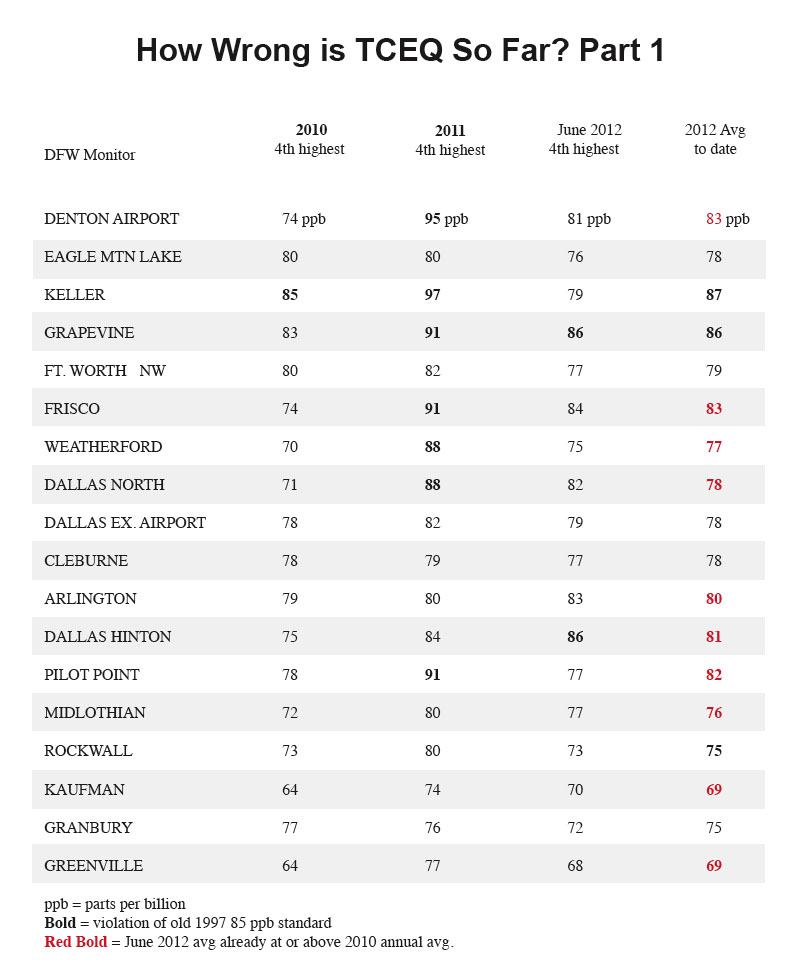 DFW air quality got significantly worse in 2011. Last year, DFW saw three times the number of area air monitors violating the old 1987 85 ppb ozone standard – from two to seven. We also saw an increase in the severity of smog, with average concentrations rising from the mid-80's into the high 90's ppb range.
DFW air quality got significantly worse in 2011. Last year, DFW saw three times the number of area air monitors violating the old 1987 85 ppb ozone standard – from two to seven. We also saw an increase in the severity of smog, with average concentrations rising from the mid-80's into the high 90's ppb range.
So far, 2012 has seemingly picked up where 2011 left off. We saw the highest March ozone levels since monitoring began in 1997. Last week, the Arlington Airport monitor exceeded a one-hour smog standard that was 20 years old. One that officials celebrated overcoming a decade ago. We already have two monitors that have recorded enough "exceedances" to make them official violators of the 85 ppb standard that we have not yet been able to meet despite two attempts over the last seven years.
But a mere seven months ago, the Texas Commission on Environmental Quality was predicting that 2012 would be the first year we would not see ANY violations of the old 85 ppb ozone standard.
In fact, according to the Commission's computer modeling exercises it submitted to EPA as part of the official DFW clean air plan, 2012 would be the best year ever recorded for ozone levels in DFW. Smog would reach historic, never-before-recorded lows. It would be a new day in DFW air quality. And it would all happen because enough people would buy enough new cars coming out of the worst national economic crisis of the last 80 years to lower pollution to unprecedented levels. Honest. That was the strategy.
TCEQ staffers were saying this with a straight face after the worst year for smog in North Texas since 2007. It seemed unlikely that the situation would turn around that fast. More than unlikely actually. On the other side of ridiculous. We said so at the time, but common sense doesn't dictate air quality policy anymore. TCEQ's computer modeling does. If it says everything will be hunky-dory, even in the face what strike us as incredible odds, well, that's because the computer is smarter than us.
We've written about the large escalation of Haynesville Shale gas mining and production pollution that could be contributing to DFW air quality getting worse in 2012. There are plenty of other suspects, including the politicalization of the TCEQ Chief Engineer's office, and the resulting junk science often used by the Agency to justify its inaction on any front. Nothing better symbolizes this junk science than the computer modeling used by the state to claim that all we had to sit back and watch the new cars roll off the lots and the air would be cleaner than it has in the last 40 years.
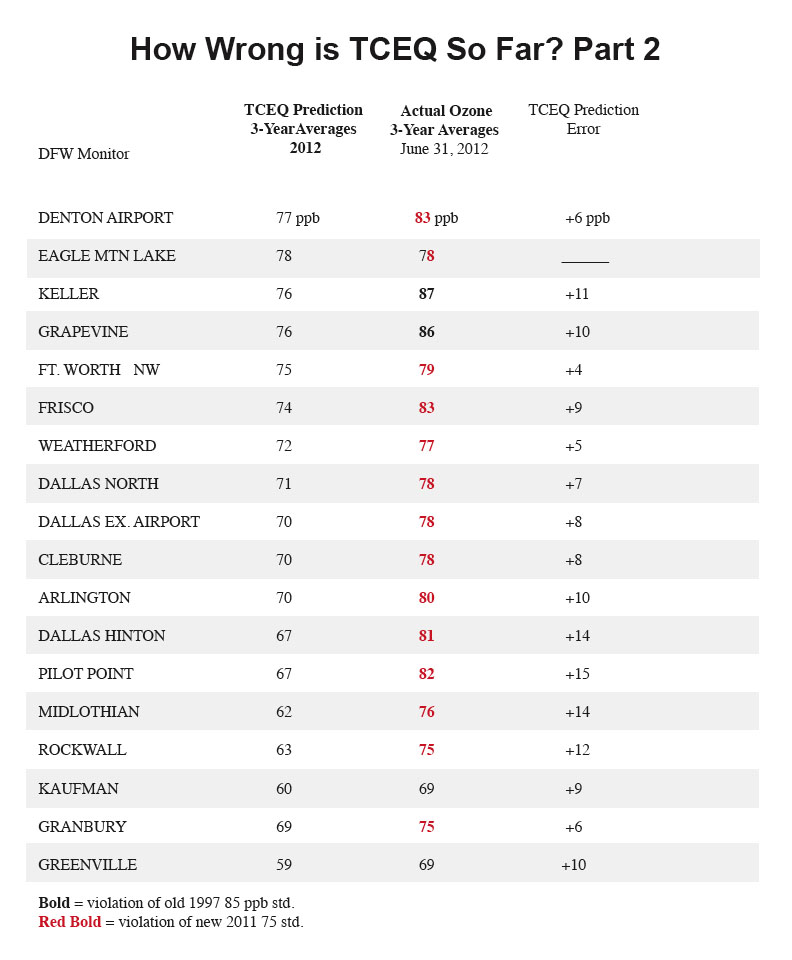 At the end of our first significant run of what the state calls "ozone episodes," for the 2012 season, we'd thought it might be instructive to see just how wrong the TCEQ computer modeling has been only a couple of weeks in Summer:
At the end of our first significant run of what the state calls "ozone episodes," for the 2012 season, we'd thought it might be instructive to see just how wrong the TCEQ computer modeling has been only a couple of weeks in Summer:
– Only four months into ozone season and 17 out of 18 DFW air monitors have already recorded smog levels in 2012 that have exceeded the annual concentrations predicted for them this year by TCEQ. The Eagle Mountain Lake in northwest Ft. Worth site is now exactly at its predicted value for the year. We wouldn't bet that it stays there very long.
– The underestimation error by TCEQ among the 18 air monitors ranges from 4 to 15 parts per billion and average 8 ppb. Eight monitors are off by at least 10 ppb or more. Pilot Point was the most underestimated to date, at 15 ppb above its annual number on June 31st.
– EPA enforces the ozone standard by watching the running three year averages of the 4th highest ozone reading at any one monitor. Two monitors – Keller and Grapevine – have already recorded high enough levels of smog in 2012, that when their current 4th highest readings are combined with their annual 4th highest from 2010 and 2011, they violate the 1987 85 ppb standard with a rolling average of 87 and 86 ppb respectfully. That is, DFW wouldn't have to have any more ozone alert days after last week for it to remain in "non-attainment" of the obsolete and "unprotective" 85 ppb standard. We've already blown it for the whole year. Now it's just a question of how bad.
– 16 out of 18 DFW air monitors are already out of compliance with the new 2011 75 ppb ozone standard. According to the TCEQ, that number was supposed to be five this year. Only the Greenville and Kaufman County monitors are legal at this point.
– Ominously, as of June 31st, 12 of the 18 monitors had already exceeded their 4th highest readings for all of 2010.
Traditionally, August is the worst month for DFW ozone. We have most of summer still to go. But this year we only needed two weeks of it to officially re-classify our air as unsafe and illegal.
Why does anybody continue to listen to TCEQ about this stuff?
You Don’t Need a TCEQ To Know Which Way the Wind Blows
Flare at XTO gas treating facility in Freestone County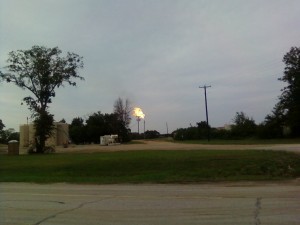
Dallas lies directly downwind of Freestone County during DFW's ozone season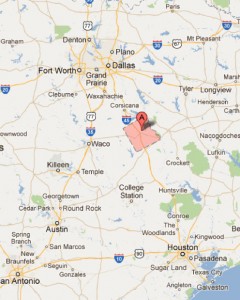
For their "study," the TCEQ was comparing a site in Parker County that was their "Barnett Shale" air monitor, with a "non-Barnett Shale" monitor at Eagle Mountain Lake.
Now you have to understand that in 2009, the area around the EML monitor looked like Spindletop circa 1901, with derricks spotting the landscape in all directions, including for miles and miles east and south of the Lake, which is in northwest Fort Worth. The idea that this monitor was "relatively unaffected" by gas industry emissions was laughable to anyone who'd actually been on the ground and visited the site. But this staffer clearly hadn't set foot outside of Austin except to come here and give this reassuring briefing.
And the TCEQ's logic went like this: Since the predominant winds during "ozone season" go from southeast to northwest, and since all of the gas emissions from the Shale were clearly "west" of DFW, there was no way that gas mining emissions impacted Metromess air quality.
When it was pointed out that there was plenty of drilling on the eastern and southern sides of the EML monitor, the staffer replied that the "majority" of Shale emissions were north and west of the metropolitan area.
It was a ridiculous argument then and even more so now, given how far east and south gas mining as advanced. There's active drilling and processing in seven of the 10 "non-attainment counties (Dallas, Denton, Ellis, Johnson, Tarrant, Parker, and Wise). The rigs have marched east along I-30 and I-20, from Weatherford to Ft. Worth to Arlington to Grand Prairie. Now the city of Dallas is re-writing its gas drilling ordinance in response to a new wave of requests to drill further east. There's no question that many ozone monitors that had no gas sources around them 10 years ago are now either surrounded and/or downwind of gas sources of air pollution in 2012.
And yet, this "gas pollution isn't in the right location to impact DFW air quality" argument is still being used by the TCEQ to avoid more pollution controls on gas sources within the now-10 county DFW "non-attainment" area for smog.
Compressor Station in Freestone County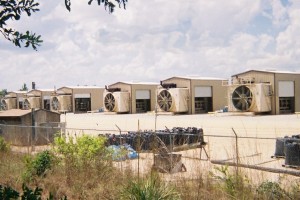
Hold on, Arlington may be in the thick of it, but Dallas isn't downwind of gas sources, is it?
Yes it is.
For one thing, you have drilling and processing and injection wells in northern Ellis County, and their pollution is as likely to impact Dallas air quality, just as the Midlothian cement plants, located in the same vicinity, have been doing for decades.
But you may not be aware of the huge amount of pollution coming from gas sources in places southeast – and upwind – of Dallas like Freestone County, otherwise known to clean air activists as the home to the dirty ol' Big Brown lignite coal-fired power plant.
Big Brown has earned a reputation for being an environmental disaster that lacks modern controls. It puts a lot of bad stuff in the air, up to 6,8,00 tons a year of smog-forming Nitrogen Oxides (NOx). That's approaching half a million cars' worth of air pollution right there. And that's why it's important to keep pressing Big Brown and all the other East and Central Texas power plants upwind of DFW to modernize and reduce emissions.
But here's the thing. Even though Freestone County isn't in the Barnett Shale, it's in the Haynesville Shale play of East Texas. It now has as many gas wells (approx. 3000) within its borders as Tarrant County – the epicenter of the Barnett. It also has a lot of gas pipelines running through it. Those pipelines need compressors to keep them running. Consequently, Freestone County has a lot of compressors. 130 of them according to the TCEQ, up from 69 just three years ago. Each of these large line compressors can be permitted by rule – meaning its automatic and not open for public discussion – for up to 250 tons per year of Nitrogen Oxide pollution and 25 tons of Sulfur Dioxide and other kinds of pollution.
This is a citizen's map of all the gas compressors in Freestone County...in 2009. There are twice as many now according to the TCEQ.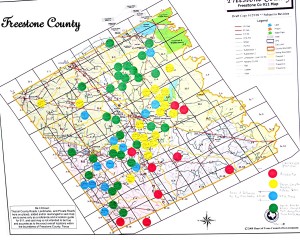
Gas compressor permits in Freestone County represent the equivalent of 4. 7 Big Brown coal plants worth of NOx pollution. Every year.
Big Brown is actually being forced to reduce its emissions of NOx. It's switching from burning lignite coal to the "good stuff" from Wyoming and adding more controls. Compressors? Not so much. Their proliferating throughout the state with no accountability of how they will impact air quality – including non-attainment areas downwind.
Now add the phenomena that the Denver air quality folks have identified of already dirty air being able to turbocharge gas patch air into ozone pollution more quickly, and you have a large and potent pollution "front" blowing in from the southeast toward DFW to meet the prodigious amount of smog being generated in the central city.
That might explain why a monitor at Mockingbird and I-35 – on the eastern side of DFW – that hasn't tripped in seven years has done so again this summer.

